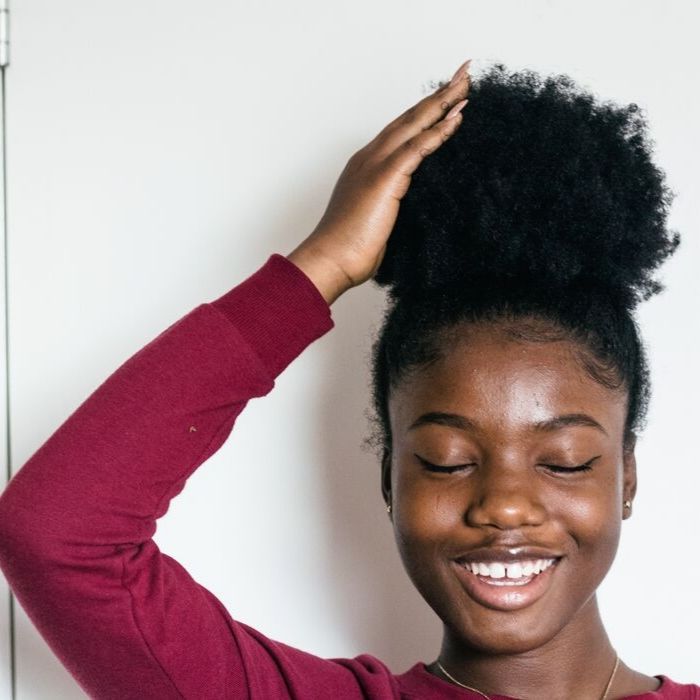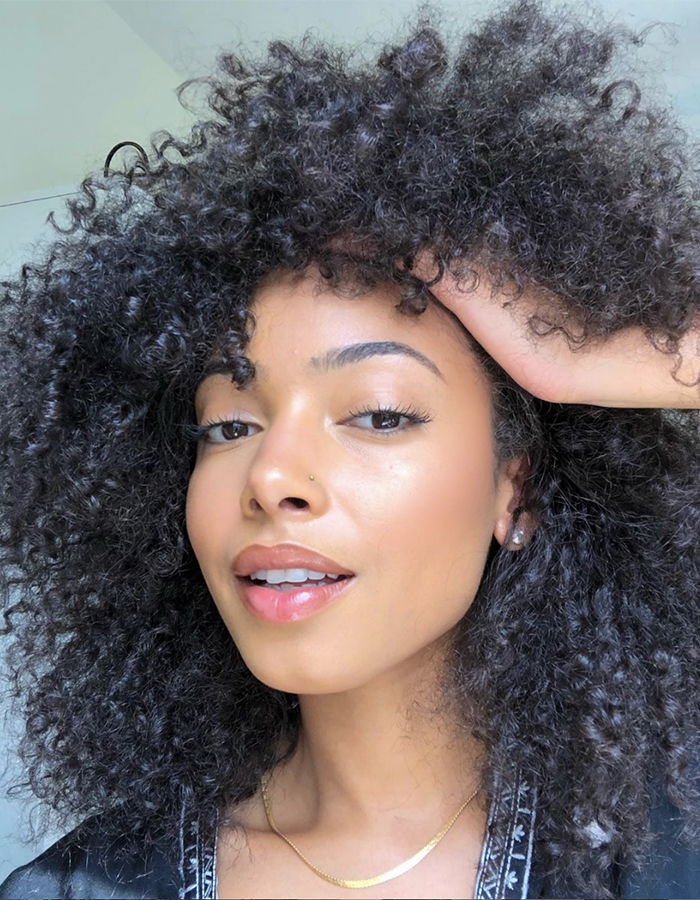
Image: Unsplash
We often focus on healthy hair, but an often-overlooked factor is promoting scalp health and ultimately, hair health. Hair health is not complete without learning and understanding the scalp structure and anatomy. Understanding the scalp is essential to any hair growing endeavor. The scalp is the birthplace of every new hair, and if kept in proper condition, it will provide an optimal environment for the follicles to produce quality hair.
What is the scalp?
The scalp has an intricate network of blood vessels moving and carrying nutrients throughout, and because the scalp closely resembles skin on the rest of our body, most general skin features and functions also apply to the scalp. However, the scalp differs from skin on our body in that, it houses larger oil glands and produces more sebum (the scalp’s and our body’s natural oil”>, As with the layers of our skin, there are three layers to the scalp: the epidermis (uppermost”>, dermis (middle”> and subcutaneous (bottom”> layer. The subcutaneous layer houses the scalp’s blood supply vessels and fatty tissue.
The epidermis (top layer”> of the scalp is further subdivided: stratum corneum (uppermost layer”>, is made up of dead, keratinized cells. The cells on the surface of the scalp naturally shed as new cells form. The stratum corneum is hugely crucial, in that, water housed in the deeper skin layers migrates upward to provide moisture and hydration to the stratum corneum. What happens next is that the skin’s moisture evaporates into the environment, which eventually leaves the skin feeling dry. This is precisely why it’s vital to hydrate the body from within- to fight scalp dryness. Furthermore, if you are dehydrated, your body will supply little moisture to the upper layers of your skin which means, subsequently, you will then have to rely on external moisturizing products to hydrate the scalp.
Sebum’s primary function is to condition the skin and act as a barrier to prevent moisture loss. Sebum houses a variable mixture of fatty lipids that include; fatty acids, wax esters, squalene, cholesterol, and glycerides. You may recognize many of these ingredients as those commonly found in deep conditioners and even hair oils.
We all know and or have heard that due to the nature of curly hair, sebum has a hard time working its way down the bends and twists along the hair shaft, preventing its spread throughout the hair (remember, sebum is a natural conditioner to the scalp and hair, which helps prevent moisture loss”>.
Some individuals naturally have low sebum production rates, which can be an active contributor to chronic scalp dryness; however, other’s scalp dryness can be self-inflicted. When we place products directly on the scalp, and it builds up, scalp conditions and hair growth issues can become compromised. Like skin, the scalp needs to be able to breathe.

Image:@tach.j
How can we increase scalp blood circulation?
Through exercise and scalp massages. When we exercise, we sweat. Through sweat, toxins, and waste, substances are flushed out from the skin pores. Likewise, when we sweat from our scalp, it helps to unclog the hair follicles, giving space for new growth. The bloodstream continuously transports oxygen and nutrients to the brain, skin, and vital organs in the body and exercising plays a pivotal role in improving blood circulation.
Each hair follicle has blood vessels that nourish it by supplying it with oxygen and nutrients. Increased circulation stimulates growth in hair follicles, and regular exercise leads to better cell renewal. Exercise increases blood flow; the more the blood flows, the more nutrients and oxygen supply, thus, improving hair growth.
Here is what makes scalp massages more effective; You can increase the flexibility of and circulation to your scalp by gently massaging it daily. Physiological and nerve activity levels increase so as you massage your scalp; the blood vessels rush blood faster through that area. And since the blood is carrying food your cells take in they’re getting more in and in turn producing more protein.
We habitually engage in hair practices that strip our hair of its essential oils and nutrients — for example, using excessive shampoos, too much hair washing, overexposure to the sun, not applying enough conditioner. Hair oils can lubricate the scalp and stimulate its pores to produce more healthy, natural oils. Massaging oil into your hair stimulates blood circulation.
Keep in mind that all oils are not the same; some are actually “greasy” or “heavy.” Remember, only apply a small amount of oil to your scalp on an as-needed basis. But keep in mind that however, beneficial oiling the scalp may be for many people, it might not be right for everyone.
Essential oils can help to repair the natural oil production and promote healthy hair growth. But you need to use the right types of essential oils for your scalp condition, like peppermint, tea tree, lavender, rosemary. Always make sure to use a carrier oil when an essential oil.
Here are some great blend of oils for the scalp:
- Righteous Roots Oils
- Alikay Naturals Essential 17 Hair Growth Oil
- EDEN BodyWorks Peppermint Tea Tree Hair Oil
How do we cleanse the scalp?
If you want your hair growth to thrive, the scalp must stay clean, pH balanced, pliable, and positively stimulated. Hair receives nutrients it needs to grow via the bloodstream. So it’s as simple as this, increase the supply of blood to your hair follicles and you increase the supply of nutrients to your hair. An increase in blood flow also helps prevent dandruff, psoriasis, and other scalp problems that may affect growing healthy, strong hair.
Clarifying Techniques
You should clarify your hair and scalp at least once a month with a clarifying shampoo to help remove buildup and dead skin cells. Try to leave the clarifying shampoo on your scalp for at least three minutes for a proper cleanse.
Also, great for the scalp are exfoliating scrubs, which help remove dead skin cells.
Product Suggestions:
- Rawkyn Gold
- Briogeo Scalp Therapy Essentials Kit
- Using an ACV rinse is a mild way to clarify your scalp, as an ACV rinse helps restore your hair and scalp to its natural pH (Allow the rinse to stay on the scalp for at least 3 minutes, then rinse thoroughly”>.
Clarifying Shampoos:
- Kinky Curly Come Clean
- SheaMoisture African Black Soap Deep Cleansing Shampoo
- Suave Naturals Daily Clarifying Shampoo
Sources: John Halal. Hair Structure and Chemistry Simplified, 4th ed. Christopher Harris, “Scalp Anatomy,” Emedicine. Claude Bouillon and John Wilkerson, The Science of Hair Care. Dale H. Johnson. Hair and Hair Care. Kathleen V. Roskos and Rich H. Guy, “Assessment of Skin Barrier Function Using Transepidermal Water Loss: Effect of Age, “Pharmaceutical Research.
